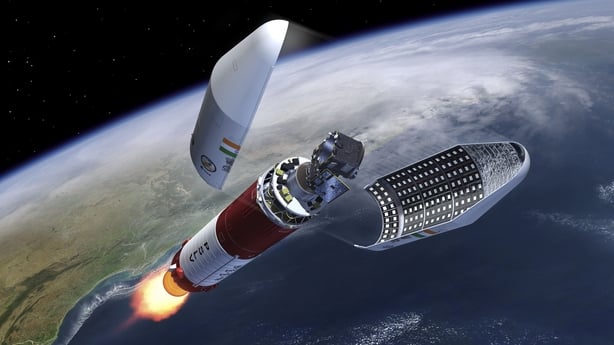The launch into space of a European Space Agency (ESA) mission that will use technology partly developed by a Cork-based company was postponed earlier today.
The liftoff was delayed until tomorrow after an anomaly was detected.
Proba-3 will see two satellites sent into orbit to create the first man-made solar eclipse.
The eclipse will be used to study the Sun's inner corona, the outermost part of its atmosphere which is usually hidden by the bright light of its surface.
The two satellites will fly in precise formation together, with one casting a shadow over the Sun so the other can observe, the first time this has every been attempted by ESA.
The crafts will fly with 1mm precision and this will be made possible by technology developed in part at the Cork office of US sensor and semiconductor developer, Onsemi, which bought the Cork based start-up, SensL, in 2018.
The silicon photomultipliers (SiPMs) allow the two satellites to fly in millimetre-scale formation at a speed of 22,000mph.
Dr Steven Buckley, Onsemi’s lead engineer on the project, is in Chennai in India for the launch.
We need your consent to load this rte-player contentWe use rte-player to manage extra content that can set cookies on your device and collect data about your activity. Please review their details and accept them to load the content.Manage Preferences
"The idea is that you have one of the satellites…which is a disc, and it creates a perfect eclipse of the Sun," he said.
"And then 150 metres away, around that distance there's the coronagraph, which is the camera, which it then studies the corona."
"The problem with that is it's you can't put a 150-metre pole up in space. So you have to have two satellites and they have to align perfectly."
He added that the slightest deviation will cause problems, so the four light sensors developed by Onsemi are used to monitor the light from the eclipse.
"The light level is then measured by these four sensors, turned into electrical impulses, which then turn into digital to the computer, and then an algorithm then taking the light levels of the four points determines the alignment and changes the satellites to keep them in the line," he said.
"And they do that over 150m to an accuracy of plus or minus a millimetre, remembering that the remember the satellites are travelling 22,000 miles an hour."

The project has taken seven years of work.
"I’ve worked on NASA projects and things like that, which I thought were very exciting," Dr Buckley said.
"But that was always ground level stuff. But in this particular case, I was holding the thing that was going up there."
"So you are actually holding something that is going up into space, which is quite exciting. So when we go to see the launch tomorrow, it's going to be the finish of a rather interesting project."
The first four months in space will be the commissioning phase and then the satellites enter the orbit where they will monitor the Sun for up to two years.
It will be a highly elliptical 20 hour long orbit that will extend from a low point of just 600km up to 60,000 km, with the formation flying taking place for up to six hours at a time.
The data will be used to not only improve our understanding of the Sun, but also as a predictor of solar weather, such as coronal mass ejections or solar storms which can affect how communication networks or power grids on Earth function.
Asked would he be nervous, Dr Buckley expressed confidence in the mission.
"It's worked on the ground and we fully expect it to work up there," he said.
"It's been well and truly tested at this stage. But it's like watching the birth of your own baby."






